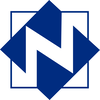|
STEAM is an educational initiative more than thirty years in the making. In 1983, the National Science Board reported on the serious educational deficiencies of American students in the subject areas of STEM: science, technology, engineering, and math. In addition to outlining American students’ lack of competencies—in particular, compared to their peers in other countries—the commission also proposed the creation of STEM curricula that was both revised and intensified. The impetus for their curricular recommendations, according to the commission, was to ensure that American students would be competent and competitive in STEM areas by 1995, equipping the twenty-first-century American workforce to be among the strongest in the world. By Amy Koester from The Building STEAM with Dia Toolkit...
The Building STEAM with Día Toolkit, made possible by a generous donation to the Association for Library Service to Children from the Dollar General Literacy Foundation, provides a research-based overview of the importance of intentionally planning for the inclusion of diverse content and community partners in STEAM programming. The toolkit also includes easy-to-follow sample programs and tips to get started with a Día STEAM program. As we near the 20th year of the celebration of Día, we would love for your library to kick off your Día year by thinking about Building STEAM with Día! More on Dia... |
AuthorJohn's collection of tech tips, trends, and training for NFLS librarians Click to set custom HTML
Archives
December 2018
|
|

 RSS Feed
RSS Feed
